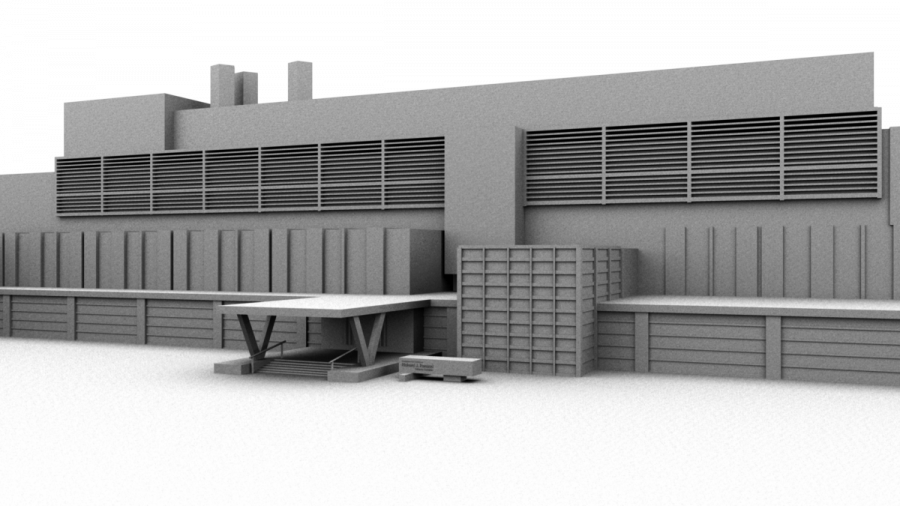The Cost of Space
How Construction Spending Is Eating Into University Operating Funds
All Space content is available on our Special Issue Microsite. Works best on Chrome or Firefox.
At first glance, it seems paradoxical: if Concordia University is so constantly plagued by budget troubles, where does it find the money to keep expanding?
Examples of expensive real estate projects in the past 10 years abound: $172 million to build the EV Building, $85 million for the Richard J. Renaud Science Complex, $120 million for the MB Building.
Add those costs to the dozens of smaller renovation projects and downtown real estate purchases that the university has undertaken in recent years, and you’re running a serious bill—one that will take a long time to pay off.
And Concordia isn’t alone: the Université du Québec à Montréal, Université de Montréal and Quebec City’s Université Laval have all been expanding too, whether financing buildings to hold new classrooms, or whole new campuses.
While these additions have been in response to increased university enrollment, questions still remain: how exactly are we paying for all these projects? And how does spending so much on space affect other aspects of the university?
It’s a question that worries the Fédération québécoise des professeur(e)s d’université, which this fall published a 426-page document outlining university expenditures from 1997-98 to 2008-09.
Its findings are alarming: faced with insufficient funding for capital assets (which include real estate, building development and renovations, as well as things like furniture, equipment and books), universities have been dipping into operating funds to pay for new spaces, thereby negating all the extra money they’ve been given by the government in response to the increased enrollment.
“[The government is] supposed to finance 100 per cent of all the [capital assets], but in the last ten years they have financed only 64 per cent,” said Michel Umbriaco, president of the FQPPU’s committee on university financing. “The number of students increased, so the management has an obligation to put the students somewhere.”
According to the FQPPU’s report, the total cost of constructing and acquiring new space over all Quebec universities more than doubled in the period of study, while government funding for these projects has increased only slightly.
Private donations and special grants have, at times, helped to repair this discrepancy—Concordia’s MB Building, for example, received $25 million from the Molson family to aid its construction—but private donations for capital assets projects have largely decreased since 1997, according to the study.
In the meantime, the amount of capital assets operations being paid for with money from other university funds has risen by 162 per cent, taking $270.5 million away from things like teaching, research and bursaries, even though increased enrollment meant more government funding for these areas.
The end result of this push for more new university spaces means less money per student for the day-to-day expenses of the university, like paying professors.
“Along the years, all the new money that came to the [operating funds] is diverted to the [capital assets funds].” said Umbriaco. Compared to the rest of the Western world, he thinks “we are lacking at least 800 professors right now in the Quebec system.”
The main problem, according to Umbriaco, is that no one is thinking about the long-term implications of the situation.
“There is a lack of intelligence overall in the ministry,” he said. “There are new people every two years; there is no such thing as an expert [civil servant].”
He said that for years, governments have been promising more money down the line, but never delivered.
“They say, ‘Okay, we will underfund that for a year or two but […] after that we will have more money.’ It’s the same thing this year with the cutting of $114 million.”
Umbriaco thinks that governments have been unrealistic about the amount of money needed.
“The government says that they don’t have to support the capital expenditures because they are supposing that there will be a decrease in the number of students,” he said. “But after 15 years of missing the target, the under-financing of the capital funding is becoming dramatic.”
He adeed that the underfunding makes it hard for universities to plan for the future.
“Many administrations are caught in the spinning of the moment. Just to take the budget and try to balance it—that is a very hard task right now.”

The Continuing Cost of Expansion
Construction at Concordia has slowed in recent years, mimicking the trend across other Quebec universities.
But the university will continue paying for its recent high-profile projects well into the future. Throughout the FQPPU’s period of study, Concordia’s long-term debt grew from $188 million to $442 million, and current liabilities (including interest on debt, bank loans and other borrowed funds) amounted to $220,450 of Concordia’s total funds in 2012-13.
This year’s budget calls paying back “unfunded capital expenses” such as the MB Building and the Grey Nuns Residence a “challenge.”
Additionally, Concordia spends $20.5 million each year to maintain, clean, heat, power and deal with waste in its 60 buildings on both campuses.
The fact that so many of Concordia’s buildings were built recently, however, keeps these bills lower than they might otherwise be. In fact, the university “has been ranked by the Ministère de l’enseignement supérieur, de la recherche, de la science et de la technologie for the past 15 years as the most energy efficient institution,” according to Cléa Desjardins, senior advisor of Concordia’s External Communications department.

The Corruption Question
The cost of University construction deserves attention in Montreal, a city where corruption swells municipal building contracts by an estimated 30 to 40 per cent.
As revealed by the Charbonneau Commission, multiple companies contracted to build and engineer Concordia’s recent projects have also been involved in collusion and corruption in their dealings with the City of Montreal.
The MB Building is a prime example of this. Its Electrical Mechanical Engineering firm Groupe HBA Experts Conseils (now EXP) was implicated in a municipal contract-sharing scheme by Michel Lalonde, president and director of Génius Conseil and orchestrator of the operation.
Lalonde also outed Dessau, an engineering firm tied to the MB Building’s general contractor, Verreault. The building’s project manager, Genivar, was raided in November by anti-corruption police.
Loyola’s $85-million Richard J. Renaud Science Complex can also be linked to an allegedly corrupt company—its general contractor, EBC, has been suspected by the SQ’s Unité anticollusion of having taken 10 per cent in “extras” in its dealings with Quebec’s transport ministry.
According to Concordia, each real estate decision is accompanied by a long list of checks and balances.
“Facilities Management is responsible for liaising with members of the University community to review space needs and from there develop space requirements and plans along with recommendations that meet institutional needs,” said Desjardins.
“Recommendations to acquire space are reviewed by the VP Services, the senior management of the University, the Real Estate Planning Committee of the Board of Governors, the Finance Committee of the Board, and subsequently the Board itself. Government approvals may also be required for some initiatives related to real estate.”
Concordia’s construction contracts are awarded by public tender.
Like so much in Quebec universities today, the issue of capital assets is simply waiting to get dealt with. The FQPPU says they will be discussing the problem at next week’s Summit on Higher Education.
One proposed solution is to do away with the per-student funding model and create a system of financing that corresponds better to universities’ actual needs. Another is to create a council on universities that will provide financial guidance.
But it remains to be seen whether those at the table will be able to come together and find a solution that works, or if the system will continue to live year-to-year, with no clear picture of the money universities will have—or how they should be spending it.




2_600_375_90_s_c1.jpg)
_600_375_90_s_c1.jpg)
